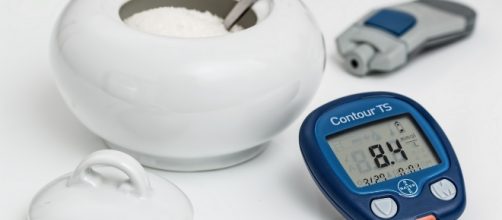The annual 254th National Meeting & Exposition of the American Chemical Society (ACS) held in Washington DC this week is a perfect opportunity for the researchers from Gower's Lab at the University of South Carolina (USC) to present their findings into new methods to treat diabetes. Instead of using insulin injections or standard pill medication, they have come with positive results implanting a special polymer sponge into a fat tissue of mice who had symptoms that resembled Type 2 Diabetes. The implants helped reduce the weight gain a lowered the blood sugar levels based on the recent new findings on the role and function of fat cells in the body.
Body fat, talk to me
For any person with Type 1 or Type 2 diabetes controlling the levels of blood sugar is an arduous job. From constant checking of the glucose blood levels to daily use of insulin injections or medication pills. Various medical research teams are constantly trying to find new methods of less invasive blood control and a replacement for insulin injections. The researchers are now concentrating on the role of body fat in our organisms and the possibility that represents a key in finding a solution to diabetes treatment.
Since a few years ago, medical researchers, particularly endocrinologists, have concluded that fat is an endocrine organ and not just a passive energy storage in our bodies.
One of the functions it has is to respond to insulin and glucose. That is where the most recent research in the treatment of diabetes is concentrating. One line of research pursued by teams in China is concentrating on so called "sugar sponges," which would keep or release the sugar, as the body needs it.
The USC research takes the "sugar sponge" concept a step further by trying to re-establish proper 'communication' between body fat and other organs of the body. As Michael Gower, Ph.D. puts it, "When fat stores get too large, communication with other parts of the body breaks down and can lead to diabetes." The goal of the USC research is to restart that communication properly.
Promising research results
Gower and Michael Hendley, a doctoral student at USC used poly(lactide-co-glycolide) so called PLG sponges which they inserted into abdominal fat pads of obese mice with symptoms close to Type 2 diabetes. Testing the mice with implants and a control group with no implants after three weeks, the researchers found that the mice with implants had a 10% increase of body fat, while that gain in the control group was 30%. The mice with fat sponges also had lower blood sugar level than the control group.
As is usually the case with initial exploratory studies, further research is underway. The task before the USC and other teams now are to precisely determine why the PLG sponge has such effects on reducing the body fat and lowering glucose levels.
This could be crucial in fine-tuning the approach to make it as effective as possible. This is not only important for the millions of people that have diabetes, but also for the fact put forward by the "U.S. Centers for Disease Control and Prevention" that according to current trends, it is predicted that one in three adults in the US will have diabetes by 2050.


